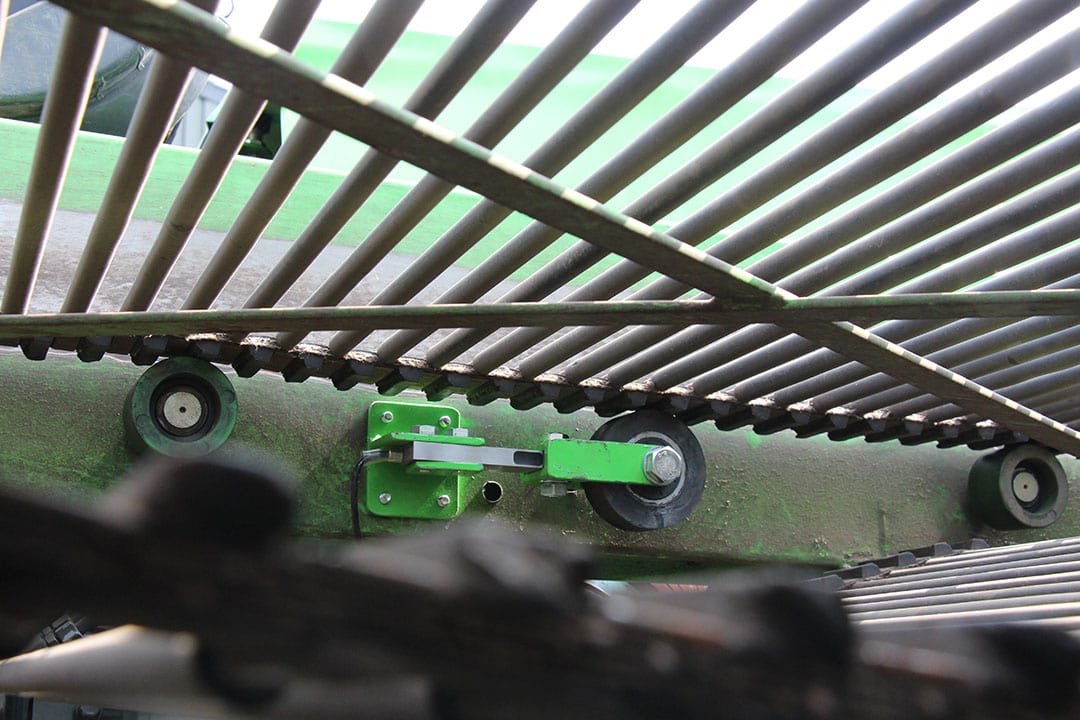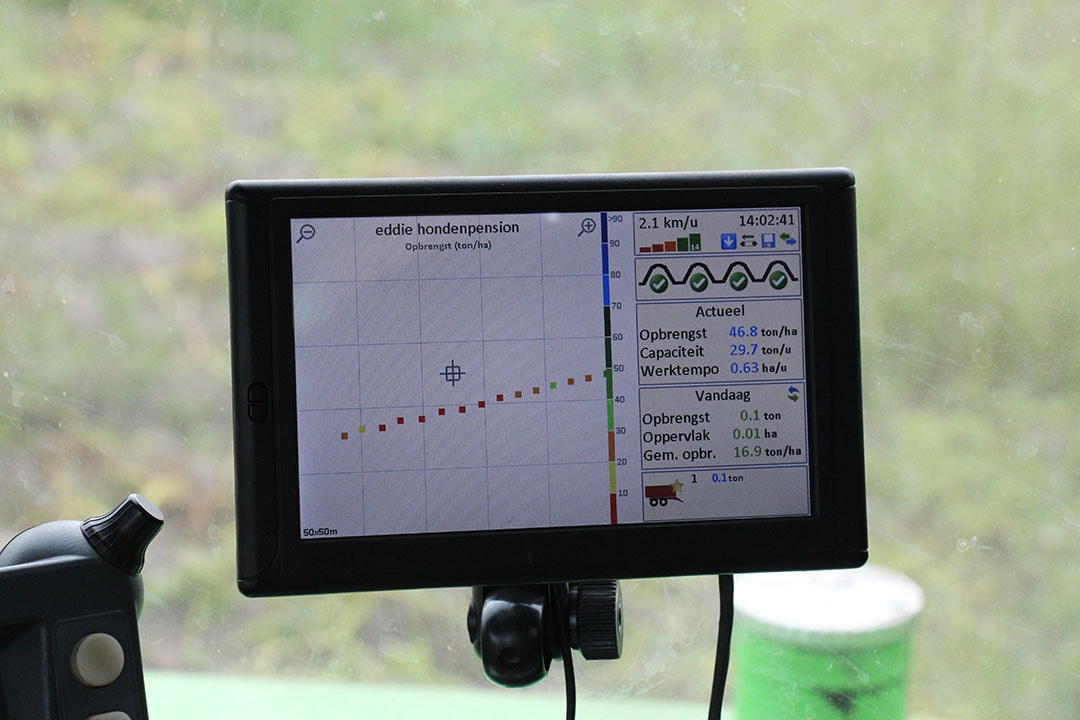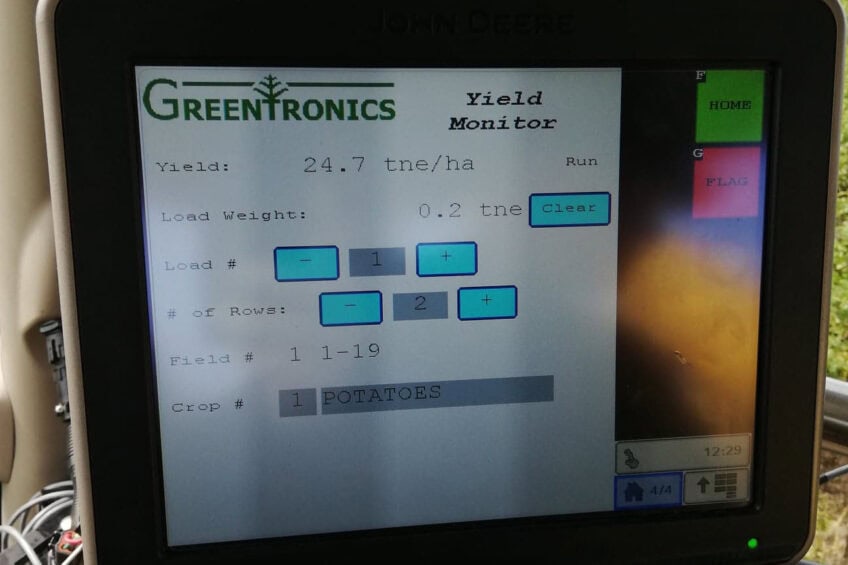Yield mapping root crops: from weighing to counting?

If you want to know what’s been going on on your fields, yield mapping is the way to go. Tried and proven in combinable crops but still challenging in root crops.
Automated yield mapping or monitoring has now been available to farmers and contractors for 30 years. On combines that is. American manufacturer Ag Leader introduced the first on-the-go yield monitor in 1992. In 1996, the company added a GPS component allowing yield data to be tied spatially and to produce yield maps. It led to what we now refer to as precision farming or precision agriculture. As of then, farmers were able to quantify the variation and the uniformity of their crops objectively. A good example of how farmers can benefit from those data, is provided by Pitstick Farms in Illinois that has been gathering farm, field and yield data since 1996.
Text continues below picture

Evaluate growing seasons
Mapping yields is a good way of evaluating a growing season. The yield quantity and quality represent the outcome, the effects, of choosing certain seed varieties, fertilisation, crop protection, irrigation and of course also the weather. On combines that is relatively easy as the crop is clean(ed) and quite easy to classify. Root crop yield monitoring on the other hand brings a whole lot of other challenges. Including crop and soil residues.
Dutch precision ag pioneer Van den Borne Potatoes has been mapping potato yields for nearly 20 years now. Initially by measuring the force exerted to a roller underneath the web that fills the bunker of a self-propelled potato harvester. By combining these forces with the speed of the roller and the GPS position, it allowed for mapping gross potato yields. Since 2013, the farmer has been using a load cell system instead. That system was initially developed in cooperation with Dutch specialist Probotiq. Although the company Probotiq no longer exists, their YieldMasterPRO system still is available from Dutch Trimble importer Vantage Agrometius. It is used to map the yield of various types of crops including root crops such as potatoes, carrots, flower bulbs, onions and sugar beets.
Text continues below picture

Cameras count and classify
By adding a (machine) vision component to a yield monitoring system, the yield data can be enriched to great extent. Cameras cannot only provide insights in the amount of crop and soil residue within a constant flow of product. They can also help determine the size of tubers on a web, in two and sometimes even in three dimensions. Apart from compensating gross yields for residues, algorithms enable the classification of potato (and other) yields and obtain information about the size distribution. Thus providing very valuable data to growers. Not only to growers of seed potatoes, but also to growers of ware potatoes.
Research on the added value of machine vision for potato yield mapping dates back at least two decades when Wageningen University & Research published several articles and theses about it. That same institution started a research project in 2019 to reinitiate the technology benefitting from today’s computing power and wireless data transfer. Although the results were promising, the development is ceased because of a patent application on using camera technology for root crop yield monitoring by the British-Indian company behind HarvestEye.
Text continues below picture

These weigh-cell systems are available
YieldMasterPRO isn’t the only system relying on weigh-cells to obtain harvest data. Other systems include those of Advanced Technology Viticulture (Australia), Greentronics (Canada), Juniper Systems/HarvestMaster (USA/UK) and Topcon (USA). Future Farming approached these system providers and, in the table, below you can find more technical data about the companies that responded to our questions.
| Manufacturer | Greentronics | Topcon |
| System | RiteYield | YieldTrakk |
| Suitable for (harvesters) | Most brands and models | Any harvester that has either a bunker or belt |
| Suitable for (crops) | Potatoes, sweet potatoes, sugar beets, onions, carrots and grapes | Potatoes, sugar beets, tomatoes, onions, sugarcane, pumpkins, carrots, chicory, grapes, garlic, et cetera |
| Number of load cells required | Usually two load cells. One, three and four load cell systems also available | Two load cells on a conveyor belt. Three, four or six on a bunker/hopper depending on design and size |
| Compensation for residues | No real-time compensation | No real-time compensation |
| Yield data format | .csv format | ISO-XML format |
| Suitable for imperial/metric? | You can choose a range of units | Yes |
| Recommended retail price | From CAD $8,900 | From € 4,000 in Europe (just the kit, no console/GNSS/fitting) |
| Information | Greentronics | Topcon |



